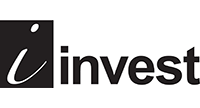By understanding the biological, psychological, emotional and behavioural mechanics of your stress cycle, you can not only convert pressure into performance, but burnout to breakthrough, says wellness coach and author Josephine McGrail
Stress happens to everyone. It is not a matter of if, but when and how. Embracing this fact will change everything – your health, your relationships, your business, your productivity – and your prosperity.
If you are willing to dive deeper into getting to know your own stress cycle, as well as those of your team and your business as a whole, you will be light years ahead. Moreover, the improvements will be longer lasting and sustainable. A win-win for all.
Unfortunately, most people never make the time to understand their cycle and fully accept the role it plays in their relationships. Most are too uncomfortable with a new way of doing things: finding it safer to stick to the old way – even if the system is broken – rather than try something new.
In the modern business environment, stress is no longer a sign of dysfunction. Looked at through new innovative glasses, it can be the indicator of evolution. For leaders navigating the complexities of AI integration, agile transformation, and mounting sustainability pressures, stress isn’t just inevitable: it’s instructive. Stress could very well be your new best friend, your mentor or guide. A kind of embodied AI in its own right.
The stress cycle uncovered
By understanding the biological, psychological, emotional and behavioural mechanics of your stress cycle, you can convert pressure into performance: burnout into breakthrough.
The stress cycle is first and foremost a physical experience – something we feel inside the body. It is a biological process triggered by perceived or ‘real’ threats – whether they are emotional, cognitive, or physical. When your brain detects a threat (whether real or perceived), your body immediately initiates the stress response: increased heart rate, narrowed focus, cortisol release. The cycle is only complete when the body receives a clear signal of safety or resolution – such as physical activity, deep connection, or problem closure.
What we need to understand is that the body does not differentiate between a real or perceived threat. To the body all threats are real and happening right now. The brain does not differ between something that could become a worry in the future (perceived threat), or something that is a major emergency happening now (real threat).
With this in mind, many leaders often get trapped in a prolonged stress response (unable to finish the stress cycle). With their inboxes overflowing, AI-driven pace acceleration, and real-time performance metrics, there is little opportunity to complete the stress cycle. This is particularly problematic in agile environments where rapid iteration and uncertainty are the norms.
But here is the opportunity: once you accept and understand the stress cycle’s existence and function, you can actively manage it – reaping benefits like clearer decision – making, stronger team resilience, and more adaptive leadership.
“On the deepest level stress sends a clear signal: Something needs to move”
Let stress move you – from friction to flow
Once we understand how the stress cycle works we need to understand the why. The answer is simple: on the deepest level stress sends a clear signal: Something needs to move.
Many leaders experience ‘chronic stress spikes’: micro-surges of cortisol from daily stand-ups, sprint reviews, or shifting KPIs. Over time, these micro-stressors, if unprocessed, can undermine confidence, clarity, and creativity.
However, stress in an agile context can also work as an ally: highlighting what matters most and where leadership focus is needed. For example, repeated stress around product velocity might indicate a misalignment between vision, strategy and team capacity. That’s a system tension, not a personal failing.
Completing the cycle: Strategies for stress-inclusive leadership
To leverage your stress cycle rather than be ruled by it, consider these strategies
Name it to navigate it
Stress that remains vague becomes overwhelming. Practice cognitive labeling and identify the source of stress precisely.Naming the stressor activates your prefrontal cortex and weakens emotional hijack. It puts you back in the driver’s seat and encourages you into action. We cannot change direction if we don’t know where we are heading or what we are trying to get away from!
Rapture, then repair
Agile methodology naturally breaks work into sprints. Apply the same principle to stress. After periods of high exertion such as a product release or sustainability or tax audit-or even a perceived threat such as an unpredictable competitor/ changes in work culture/management, make sure to schedule in active recovery. This might be debriefs, physical work outs, meditation, massages, nature exposure, or reflective journaling. This deliberate closure helps complete the stress cycle.
Foster psychological safety
Since the beginning of time humans have needed connection. We talk not just to be heard or to listen – we speak to connect. It is the number tool we all use, and the most natural way for us to calm down after a stressful event (whether perceived or real – whether personal or work related). In agility teams, psychological safety is essential to vent and process stress. Encourage open dialogue and help normalize the stress conversation. This reduces stigma and increases team resilience whilst sending a clear signal – we are all in this together, and together we are stronger.
Anchor in purpose
Stress narrows our focus, sometimes to the point of tunnel vision. Reconnecting with your purpose- why your vision matters, how your goals serve not only you but future generations- restores a sense of agency and meaning. This is especially potent in times of systemic uncertainty.
Let data serve you
AI can overwhelm with dashboards and insights. As a leader, curate metrics that support clarity, not just compliance. Let your team breathe by reducing information noise and emphasising actionable insights. This reframes data from a stress source into a stress reliever.
“Future-fit leaders are those who complete the stress cycle more efficiently”
From burnout to breakthrough: Reframing the leadership narrative
Stress isn’t the enemy: it’s a messenger. And in the agile, AI- powered, sustainability-conscious economy, that message is clear: evolve or erode. When you recognise, accept and respect your stress cycle, you start to see it as a source of insight. Are you experiencing fatigue because you’re misaligned with your purpose? Is your team’s anxiety pointing to a flaw in the feedback loop? Is AI stress a sign that your organisation hasn’t upskilled fast enough?
Future-fit leaders aren’t those who avoid or deny the existence of stress, they’ll are those who complete the cycle more efficiently: learning from it through applying a curious, compassionate, and innovative mindset. Practicing self-awareness and systemic thinking: they’ll be the ones transforming stress from a private liability into a public strength.
Conclusion: Making stress your success pillar
As the world as we know it continues to shift – reshaped by artificial intelligence, global sustainability imperatives, and the agile mandate – leaders must grow more than just their strategies. They must grow their capacity to metabolise stress, harness it, and learn from it: They must make stress their ally.
Understanding your stress cycle isn’t a wellness trend. It’s a leadership superpower. Use it, and you won’t just survive the era of transformation, you’ll lead it.
About the author
Josephine McGrail is a meditation, yoga facilitator, and the author of The Morning Miracle, Messages of Love, and Fall in Love with You.


